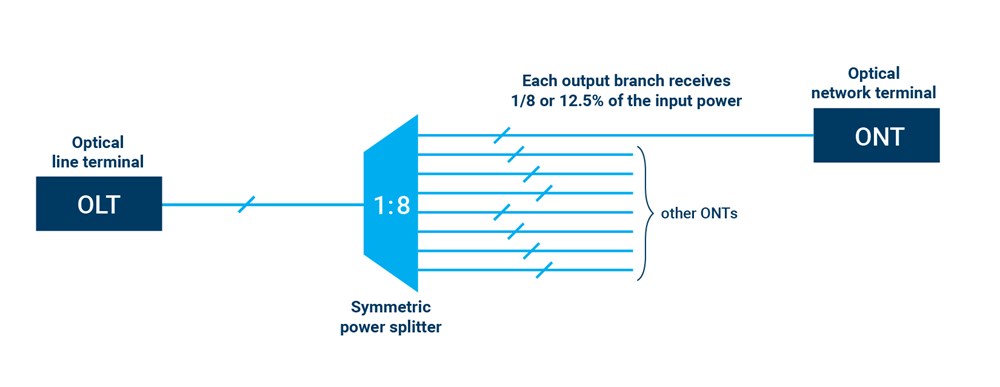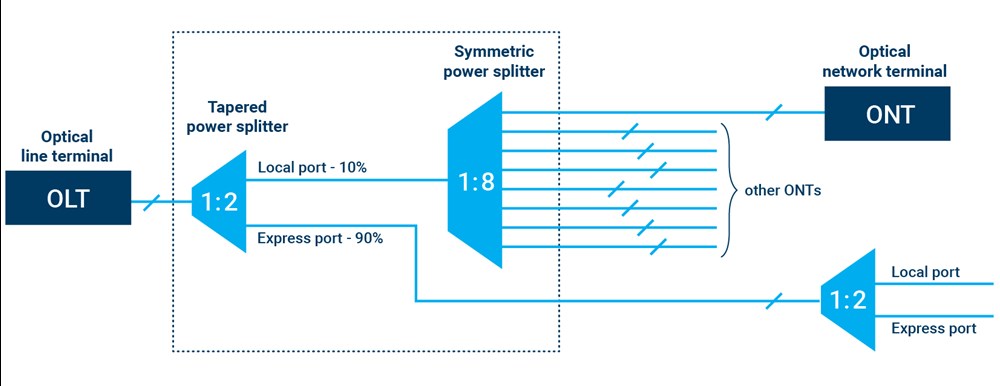Rural Broadband Services Delivery – PON Topologies
When ISPs deploy fiber broadband service to rural areas, the biggest challenges they face are economic. Like any business, and in the absence of government regulations or mandates, ISPs will offer services first to those dwellings and businesses with the lowest total cost of deployment. (The resulting lower capital and operating costs yield higher returns.)
This reality is in flux since broadband Internet access is increasingly recognized as a basic utility and an important public good. During the pandemic, skyrocketing needs for remote learning and remote work capability combined with fickle political fortunes to accelerate this shift in perspective. Political and industrial leaders in the US and abroad have even suggested broadband access be considered a fundamental human right.
Over the past several years, the US Federal Communications Commission (FCC) has shown impressive resolve to close the so-called digital divide separating urban and rural citizens. The Emergency Broadband Benefit Program (EBBP), the Connect America Fund (CAF) and the Rural Digital Opportunity Fund (RDOF) call to mind the massive push for electrification across the rural US, propelled by Franklin Roosevelt’s New Deal. Subsidized broadband deployment to rural areas may soon benefit from the huge Biden administration infrastructure spending program.
Fiber-to-the-home services in urban areas overwhelmingly utilize a passive point-to-multipoint downstream content distribution model, in which symmetric power splitters ensure all endpoints receive sufficient laser light energy and IP addresses filter that content to ensure accurate delivery of packets to their proper destination. Upstream packets also share a single channel, typically using time division multiple access methods. A key benefit of passive networks is that they avoid the need for optical repeaters and signal amplifiers to extend reach.
FTTH PON architecture has been wildly successful in serving the needs of urban (at least 1,000 people per square mile) and suburban residents (between 1,000 and 500 people per square mile), but not when deployed to rural areas (fewer than 500 people per square mile). Rural areas require longer, costlier fiber cable run lengths, and passive symmetric power splitting is not always optimal for signal distribution, particularly in sparsely populated remote villages.
Suppliers of outside plant optical components have innovated two approaches to adapt FTTH PON technology to rural applications: asymmetric unbalanced (or tapered) splitters and distributed taps. In this blog post, we’ll look at tapered splitters.
Symmetric splitters generally offer a “power of 2” number of power splits (typically 4, 8, 16, 32 or 64) where each output branch receives an equal (symmetric) share of the input power from the optical line terminal (OLT).

This equal allocation of light from the OLT among optical network terminals (ONTs) is appropriate in densely populated areas, as the distance of each dwelling or business from the centrally located symmetric splitter is roughly the same. However, in rural areas, subscribers are generally not clustered geographically. In these situations, asymmetric power splitting can help maximize reach.
Often tapered power splitters are 1:2, with one output branch being the lower insertion loss “express port” and the other output branch a higher insertion loss “local port” that connects directly to a subscriber ONT, or to a symmetric power splitter to serve a cluster of homes or businesses.

In the example shown, the local port receives 10% of the transmitted light from the OLT, while the express port receives 90% of the input power, preserving as much power as possible for the downstream tapered splitter to maximize reach out to more remote subscribers.
Tapered splitters are passive optical components and have several characteristics—insertion loss, reflective loss, polarization dependent loss, and directivity—that network designers must bear in mind when determining overall PON system performance.
In the next blog post, we’ll look at distributed tap technology for rural FTTH PON, plus test solutions for these network topologies.




